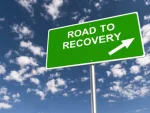Are Psychedelics Addictive: Everything You Should Know about Hallucinogens

Psychedelic drugs are a broad class of medications that modify or amplify energy levels, cognitive functions, and sensory experience. They come in a variety of ways, from artificial substances like LSD to organic plant sources like peyote. We’ll discuss a very important topic today: are psychedelics addictive? The article will touch on the various risks and the dangers involved.
Understanding Psychedelics
The class of hallucinogens includes psychedelics as a subset. Unlike stimulants or depressants, psychedelics profoundly alter a person’s perception and thought processes. The fact that they are categorized as hallucinogens is not by mistake; they have the ability to induce hallucinations, alter perceptions of reality, and lead one to see or hear things that are not there.
Most psychedelic drugs can be classified into one of these three groups:
- tryptamines (Dimethyltryptamine (DMT), psilocybin found in magic mushrooms);
- phenethylamines (mescaline);
- lysergamides (LSD).
The substances can be broadly categorized as natural or synthetic. Natural psychedelics include tryptamines like DMT and psilocybin. Synthetic ones are exemplified by lysergamides, with LSD being the most widely recognized.
These substances are finding increasing applications within psychedelic therapy. It’s a branch of psychiatry that incorporates supervised psychedelic use into the treatment process. Some experts express concern about the rise of self-medication, particularly following a 2020 Global Drug Survey indicating an increase in self-treatment for mental health issues. Still, these substances generally have a low-risk profile, mainly when used in a controlled clinical setting.

Take back control of your life and start on the road to recovery now.
Possibility of addiction
So, are psychedelics addictive? Substance use disorder is marked by persistent use even in the face of adverse consequences. It is a concern across various drugs. Still, the correlation of psychedelics and addiction is relatively low. Research suggests a condition known as Hallucinogen Use Disorder (HUD) is uncommon for most substances (PCP is an exception). A survey in the US indicates less than 1% of lifetime drug users develop HUD. However, definitive conclusions require further investigation.
Compared to traditional psychedelics, ketamine, and MDMA carry a greater risk of hallucinogenic underdose. It may be related to their effect on brain dopamine levels, which are connected to pleasure and reward. While traditional psychedelics don’t seem to affect dopamine, the majority of addictive drugs do.
Furthermore, tolerance develops to some substances, such as LSD. Use again in a short period of time might lessen the effects. Tolerance, however, also leads users to up their dosage in order to get the desired effect, which puts recreational users’ health in danger.
When it comes to psychedelic overdose, it’s critical to distinguish between this experience and a bad trip. Actual overdoses, in which a user consumes enough of a drug to endanger their life, are highly uncommon when it comes to traditional psychedelics like LSD or psilocybin mushrooms. But if one takes too much, they may have a bad trip, which may be terrifying and unpleasant.
Side Effects of Psychedelic Drugs
What will be the side effects of using these drugs depends on many factors. Each user’s experience is unique. How much you take, your wellness, and your health condition will affect the severity of the side effects. Typical consequences are:
- Distortion of time. Minutes seem like hours or vice versa.
- It is impossible to communicate or have a meaningful discussion adequately.
- Experiences are far from reality; some users say they see sounds, taste textures, and hear images.
- Trouble thinking clearly or using logic.
Such a state always means a physiological roller coaster. Depending on the specific chemical, users may experience altered sensations such as drowsiness or dizziness. Blood pressure and heart rate also change. Some psychedelics even cause excitement or relaxation in the body. LSD and DMT cause dizziness, increased blood pressure, and appetite suppression. Peyote leads to incoordination, excessive sweating, and facial flushing. The exact effects a person experiences depend on their unique body chemistry, as well as the type and amount of medication they are taking.

Signs of Addiction
After we’ve answered the question are hallucinogens addictive, we know that the dependence on psychedelics is primarily psychological, not physical. Still, chronic use leads to a desire to repeat the experience. Unlike other drugs, they do not typically cause withdrawal symptoms upon cessation. However, some research suggests a potential for increased psychological dependence with repeated use.
So, what are the warning signs of addiction to be aware of? Look at this checklist and understand if you have an addiction:
- Compulsive use. You continue to use hallucinogens even though they’re interfering with your relationship, career, or academic performance.
- Tolerance. You need to take more and more drugs to achieve the same result.
- Withdrawal symptoms. When you stop using the drug, you experience unpleasant psychological or physical side effects.
- Loss of interest in other activities. All you think about is taking psychedelics. You stop enjoying what you used to do.
- Taking psychedelics despite the bad effects. You continue to use drugs even though they are having a negative impact on your life.
You should get professional assistance if you think you or someone you know is addicted to psychedelics. You can manage any underlying mental health problem and create a strategy to stop using drugs with the guidance of medical experts.
Risks and Dangers
It is still difficult to understand what are the long-term consequences of the use of hallucinogenic substances — research is still in process. While the question of are psychedelics addictive remains a topic of debate, there are potential problems to come with their use:
- Psychosis. If someone in your family or relatives has bipolar disorder or schizophrenia, you may be at increased risk of having episodes of psychosis or mania as a result of using psychedelic drugs.
- Persistent hallucinogen perception disorder (HPPD). The condition manifests as persistent changes in perception, often described as “flashbacks.” They persist even after the effect of the drug wears off. Although rare, HPPD has been documented in some users even after a single dose.
- Unintentional self-harm or harm to others. Take LSD as an example. It does not cause serious side effects as such. However, experts say that there is a possibility of serious injuries or even death under its influence. The altered perception of reality caused by the drug leads to dangerous behavior. If a person is in dangerous or uncontrolled conditions, the situation only worsens.
- Serotonin syndrome. The condition occurs when an excess of serotonin accumulates in the body. The situation becomes much worse if you mix psychedelics with certain antidepressants, including selective serotonin reuptake inhibitors (SSRIs). They also affect the level of serotonin, and a mixture of two drugs will have very complex consequences for human health.
Psychedelic therapy shows promise for treating mental disorders. Nevertheless, it is essential to understand that a doctor’s supervision should accompany use. If you choose to undergo the therapy without a doctor’s supervision, you risk experiencing the above-mentioned dangers.
Diagnosis and Treatment
The question of are psychedelics addictive remains a complex one. While they may not induce physical dependence in the same way as certain other substances, established treatment programs do exist to address the challenges associated with their use:
- The initial phase focuses on safe and medically supervised withdrawal from psychedelics. Medication can be used to treat any associated psychotic symptoms. The decisive aspects are the elimination of sleep disorders and the restoration of a healthy diet.
- Individual and group psychotherapy sessions are key to overcoming the psychological aspects of drug abuse. Therapists work with patients to identify and address underlying triggers. It develops healthier coping mechanisms and allows you to eliminate negative self-perceptions.
- Ongoing therapy is recommended to minimize the risk of relapse. This phase also emphasizes restoring social bonds that may have been strained or severed during addiction.
In summary, choosing a holistic approach to psychedelic addiction treatment is vital to achieving successful recovery. It should relate to the physical and psychological aspects of the condition.

This can be a difficult journey, but you don’t have to go it alone. Let us be your guide and provide you the environment needed to regain control of your life and begin the path to recovery.
Reintegrate into Life with EcoSoberHouses
So, if you want to start psychedelic therapy, you ask yourself are psychedelics addictive. Even though they’re essentially low-risk, there are potential benefits and risks. Some people start feeling the urge to use drugs compulsively, so it’s vital to seek a helping hand.
When you are already on the road to recovery, remember it does not end outside the clinic. Reintegration into society can be a severe challenge. EcoSoberHouses offers a much-needed advantage at this crucial stage.
We provide a safe and caring environment specifically designed to help people transition back to life after drug abuse treatment. Our holistic approach recognizes the connectivity of well-being—we meet physical, emotional, and spiritual needs.
At EcoSoberHouses, clients experience a welcoming community that fosters a sense of belonging. We believe that the path to recovery is most effective with the encouragement of others.
Our environment gives people the opportunity to build a fulfilling life free from substance use disorder. If you are looking for a safe place to reintegrate into society, EcoSoberHouses may be your best option for a fresh start. Contact us today on the anonymous lines. We can discuss the possibility of staying and how to take the first step.




